HIERARCHY OF POLICE RANKS IN INDIA (WITH INSIGNIA)
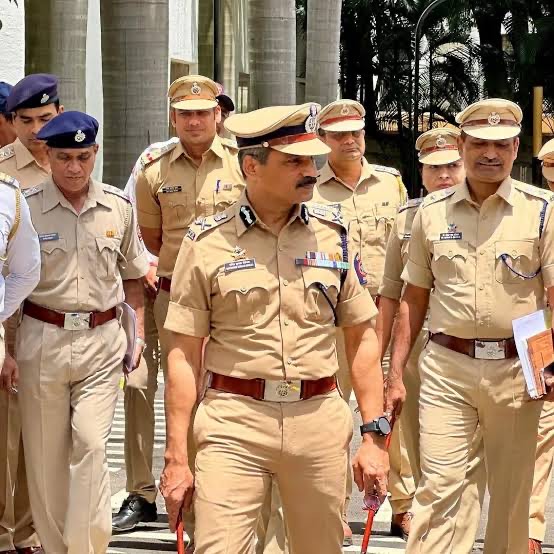
Have you ever wondered about the people who work tirelessly to ensure our safety and uphold the law in our country? The Indian Police Force is a group of dedicated individuals who play a crucial role in maintaining peace and order.
Law enforcement in India is managed at both the national and state levels. Each state has its own police force, headed by the Indian Police Service (IPS) officers.
Organizational structure and roles within the Indian police system
Ministry of Home Affairs: The Ministry of Home Affairs (MHA) oversees internal and external security and is responsible for the Indian Police Service (IPS). It manages seven Central Armed Police Forces and works closely with state governments on law enforcement matters.
Indian Police Service (IPS): The IPS is a professional body of police officers. Candidates enter the IPS through two routes:
- Regular Recruits: Candidates apply at the central level and undergo training at the Sardar Vallabhbhai Patel National Police Academy.
- State-level Selection: Candidates may take state-level exams and join the State Police Service (SPS), later being nominated to join the IPS.
State's Home Department: Each state's Home Department is responsible for law and order, internal security, and police administration. The department is headed by an Additional Chief Secretary or Principal Secretary and oversees state police forces.
State Police Forces:
- Director General of Police (DGP): Heads the state police force and is assisted by Additional or Special DGPs.
- Additional/Special DGPs: Responsible for various bureaus within the state police force (Law & Order, Crime, Administration, Intelligence, etc.).
- Commissionerates: Major cities have their own police forces, headed by Commissioners of Police (CP). Each commissionerate has Joint Commissioners of Police (JCPs) and other officers overseeing different bureaus.
- Regions, Zones, Divisions, and Districts: These divisions exist within police forces outside commissionerates, with officers of various ranks overseeing law enforcement activities.
Police Station Hierarchy:
- Sub Division: Headed by a DSP or ASP, also known as SDPO.
- Police Circle: Some states have circles within sub-divisions, headed by Circle Inspectors (CIs).
- Police Station: Led by Inspectors or Sub-inspectors (SIs), assisted by Assistant Sub-Inspectors (ASIs) and Head Constables (HCs).
- Rural Setup: Sub-Inspectors often command police stations and are assisted by ASIs and HCs.
- Urban Setup: Inspectors or Sub-inspectors manage police stations, assisted by ASIs and HCs.
Let's take a journey through the ranks within the Indian Police Force, from the top positions to those at the grassroots level.
Indian Police Service gazetted officers rank insignia
Director General of Police (DGP):
- The Director General of Police, often called the DGP, is like the captain of a ship.
- They are the head of the entire police department in a state.
- You can recognize them by the symbols of crossed sword, baton, and the state emblem on their uniform.
- Salary: ₹2,25,000 per month plus allowances
- Primary duties: advises the government on police force administration, makes rules and orders under police acts, and directs actions to control widespread strikes, protests, or movements.
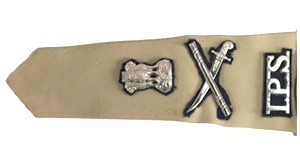
Additional Director General of Police (ADGP):
- Similar to the DGP, the Additional Director General of Police assists the DGP in their duties.
- They help in managing the police force and ensuring that everything runs smoothly.
- You'll also see them wearing symbols like crossed sword, baton, and the state emblem on their uniform.
- Salary: ₹2,05,400 per month plus allowances
- Primary duties: advises on crime management, law and order, technical services, and inspects all units under their charge.
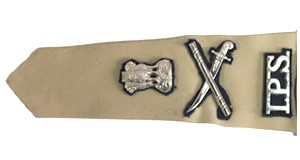
Inspector General of Police (IGP):
- The Inspector General of Police, or IGP, is responsible for overseeing a specific region or unit within a state.
- They assist the DGP and ADGP in various administrative tasks.
- You can recognize an IGP by the symbol of crossed sword, baton, and a star on their uniform.
- Salary: ₹1,44,200 per month plus allowances.
- Primary duties: Works in ranges or units, supports the DGP or ADGP, assists in administrative matters, and inspects units under their charge.
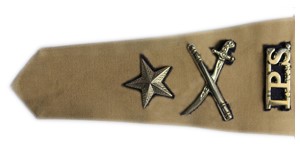
Deputy Inspector General of Police (DIG):
- Think of the Deputy Inspector General of Police as a leader in a smaller area within a region.
- They handle important matters under the guidance of the IGP.
- You'll see them wearing the state emblem and three stars on their uniform.
- Salary: ₹1,31,100 per month plus allowances
- Primary duties: In charge of a zone or range, similar responsibilities to the IGP, and assists higher-ranking officers in matters under their jurisdiction.
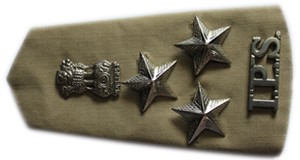
Senior Superintendent of Police (SSP) or Deputy Commissioner of Police (Selection Grade):
- Indian Police Service's senior superintendent is formerly known as a superintendent (selection grade).
- It is lower than a deputy inspector general, and higher than a superintendent.
- Insignia: State emblem and two stars.
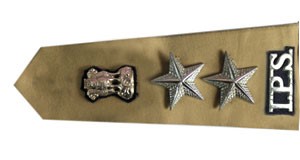
Superintendent of Police (SP) or Deputy Commissioner of Police (Junior Management Grade):
- The Superintendent of Police, or SP, is like the guardian of a district.
- They are responsible for maintaining law and order in their area.
- SPs work closely with other government officials to ensure everyone's safety.
- You can identify an SP by the state emblem and one star on their uniform.
- Salary: ₹78,800 per month plus allowances
- Primary duties: Oversees police administration in a district, maintains cooperative relations with officials, collects information, and maintains security at a local level.
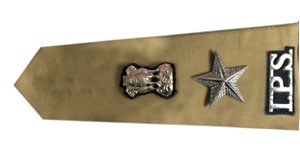
Additional Superintendent of Police (ASP) or Addl.Deputy Commissioner of Police:
- Insignia: State emblem
- Salary: ₹67,700 per month plus allowances
- Primary duties: Assists the SP, works under their guidance, and performs duties defined by standing orders.
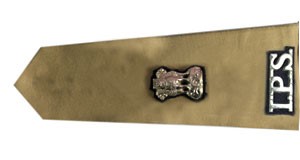
Assistant Superintendent of Police (ASP):
- It is still in use in India where the officer holding this rank is from Indian Police Service.
- However, assistant superintendent of police is a probationary rank (till the second year of the career of an IPS officer) and is worn by officers when under training at SVPNPA.
- All IPS officers start their career as Assistant Superintendent of Police. State Cadre Officer cannot hold this rank.
- They hold Deputy Superintendent of Police rank which is equivalent to this rank.

Insignia of ASP, 1st Year of service

Insignia of ASP, 2nd Year of service

Insignia of ASP after completion of training before commissioned
Indian State Police Gazetted Officer Rank Insignia
Addl. Superintendent of Police / Addl. Deputy Commissioner of Police (Odisha Police Service):
- The Addl. SP occupies a pivotal position, acting as a bridge between the DSP and SP, ensuring smooth coordination and effective communication within the police hierarchy.
- Responsible for overseeing large urban areas or entire districts, Addl. SPs ensure efficient administrative operations, contributing to the maintenance of law and order.
- Often appointed as additional deputy commissioners of police (Addl. DCP/ADCP), they lead specific zones, divisions, or units, providing leadership and strategic direction in specialized areas such as administration, traffic management, and intelligence gathering.
- SPs report to the District SP or Commandant of the Battalion, collaborating closely with their superiors to implement departmental policies and address emerging challenges.
- IPS officers typically attain the rank of Addl. SP after approximately four years of service, whereas state police service officers achieve this rank after 7-12 years, reflecting their accelerated career trajectory and dedication to the force.

Insignia of an IPS officer with rank of additional superintendent of police.

Insignia of SPS officer with rank of additional superintendent of police.
Deputy Superintendent of Police (DSP):
- Insignia: Three stars
- Salary: ₹56,100 per month plus allowances
- Primary duties: Works under the guidance of the SP, oversees investigations, maintains a daily diary, and submits reports to higher-ranking officers.

Indian Police non-gazetted officers rank insignia
Inspector:
- Inspectors are like detectives within the police force.
- Insignia: Three stars and a ribbon ½" in width, half red and half blue
- Salary: ₹44,900 per month plus allowances
- Primary duties: Investigates cases, oversees police station functioning, maintains discipline, and updates higher-ranking officers on law and order.
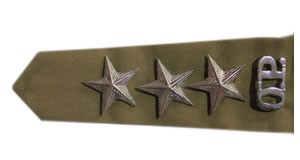
Sub-Inspector (SI):
- Sub-Inspectors, or SIs, are the backbone of the police force.
- They are responsible for preventing crimes, maintaining peace, and investigating cases.
- SIs oversee police stations and ensure that everything is in order.
- Insignia: Two stars and a ribbon ½" in width, half red and half blue.
- Salary: ₹35,400 per month plus allowances.
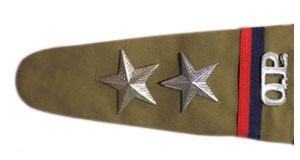
Assistant Sub-Inspector (ASI)/Havaldar Major:
- Insignia: One star and a ribbon ½" in width, half red and half blue
- Primary duties: Assistants to the Sub-Inspector, responsible for various administrative and operational tasks.
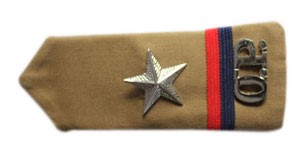
Head Constable:
- Insignia: Three stripes on the upper part of the arm sleeve
- Salary: ₹25,500 per month plus allowances
- Primary duties: General duty in police stations, assisting higher-ranking officers, and overseeing constables.
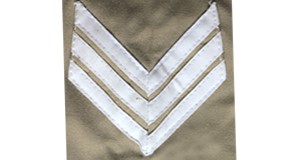
Lance Naik:
- It is police rank equivalent to corporal.
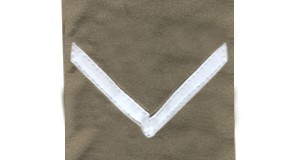
Police Constable:
- Constables are the frontline workers of the police force.
- They are the ones you often see patrolling the streets, ensuring our safety.
- Constables are responsible for protecting the public, arresting offenders, and maintaining law and order.
- They don't have any special insignia on their uniform, but they are always ready to help.
- Salary: ₹21,700 per month plus allowances

Each rank within the police force has specific responsibilities, from maintaining law and order to investigating crimes and ensuring public safety. Together, they form a robust system dedicated to protecting and serving the community. From the top leadership to the officers on the ground, every individual works together to ensure that we can live in peace and harmony.























